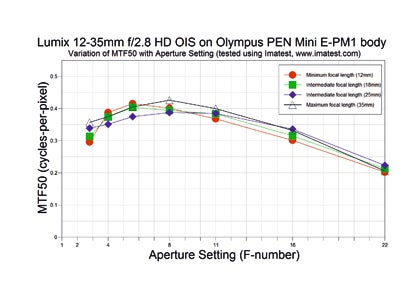Panasonic Lumix G X Vario 12-35mm f/2.8 HD Mega OIS Review
Panasonic Lumix G X Vario 12-35mm f/2.8 HD Mega OIS Review
pro quality moderate telephoto zoom with constant f/2.8 aperture

Verdict
Pros
- Silent and fast AF system
Cons
- Manual focusing
Key Specifications
- Review Price: £1097
Wide aperture
ED glass
3x zoom range
Optical Image Stabilisation
Micro-Four-Thirds
Silent internal focusing
Panasonic’s 12-35mm zoom offers the same coverage as a 24-70mm full-frame lens and also has the same f/2.8 constant aperture as is found on the best of such zooms. In addition, there is a built-in optical image stabiliser and an array of optical refinements that covers internal focusing, aspherical profiles, ultra-low dispersion and high refractive-index glasses as well as nano surface coating.
Clearly this is a flagship lens that is meant to compete with the best optics across all camera systems, not just within the CSC (Compact System Camera) domain. That being the case, first impressions count: some lenses feel good from the moment they are picked up and the 12-35mm is a particularly fine example of that sensation.
The barrel is metal, with a slightly raised rubber zoom ring mid-way and a flush manual-focusing ring at the front. The only other control is a slider switch for the optical image stabiliser (Power OIS) on the left of the barrel towards the rear.
Zooming is very smooth and offers just the right amount of resistance across almost 90 of rotation. Focal lengths are marked at 12mm, 18mm, 25mm and 35mm but there is no distance information provided anywhere on the lens.
A petal-type lens hood is provided and protrudes sufficiently little when stowed that the lens can be zoomed, but not manually focused, when it is reversed for transportation.
Being a G-series (professional-standard) product the 12-35mm zoom has what Panasonic describes as a dustproof and splash-proof construction. In particular, the Operating Instructions booklet highlights the inclusion of lens mount rubber’ but this is easily missed as it is the thinnest ring and sits very nearly level with the mounting plate. That observation might either suggest the ring could easily be damaged or that the zoom’s demanding manufacturing tolerances extend even to flexible components: in this particular case, the latter seems far more likely.
Sadly, and despite the use of multiple optical devices, there was some clear chromatic aberration seen on technical images when the lens was set to the shorter side of its focal-length range. Fortunately, real-world pictures did not display the same weakness to any obtrusive extent. Nevertheless, this is an area where the idea of equivalent focal lengths starts to break down because the management of lens defects depends directly on the actual focal length rather than the equivalent field-of-view and some defects are inevitably more troublesome at shorter (or, for that matter, longer) absolute focal lengths.

This aside, technical testing revealed an outstanding set of MTF curves that sat at or above 0.3 cycles-per-pixel from wide-open down to f/16 across the entire zoom range. Only over the final half f-stop approaching f/22 did the resolution drop below the important 0.25 cycles-per-pixel threshold.A 4 figure price tag (at time of testing) is a bit ambitious until this cost is compared with that of equivalent 24-70mm f/2.8 dSLR zooms.
Sample images


















Verdict
The problem is whether that comparison will go through potential purchasers’ minds or whether they will simply see the price-tag and overlook all that this investment will buy, not least of which are excellent image quality and a rock-solid feel.Although there is no escaping the fact that this is an expensive lens, it is also a mighty fine one.
Trusted Score
Score in detail
-
Value 9
-
Design 9
-
Image Quality 10
-
Features 10

